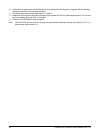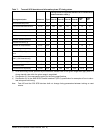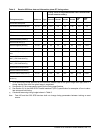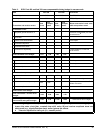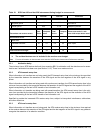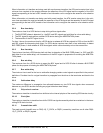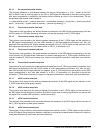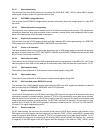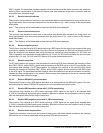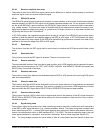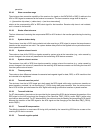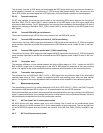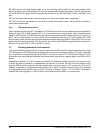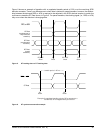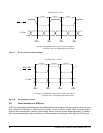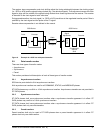
30 Parallel SCSI Interface Product Manual, Rev. A )
DB(P1) signals. For paced data transfers negative values as measured at the device connector are accommo-
dated by skew compensation in the receiver. Receive hold time measured at the device connector shall not
exceed the skew correction range.
2.5.32 Receive internal hold time
The minimum time provided for hold time in the receive data detector after allowance for timing errors and tim-
ing compensation from all sources measured from the worst-case bit (i.e., data or parity) to the compensated
offset strobe.
Note. This time may not be observable to other than the SCSI device designer.
2.5.33 Receive internal setup time
The minimum time provided for setup time in the receive data detector after allowance for timing errors and
timing compensation from all sources measured from the worst-case bit (i.e., data or parity) to the compen
-
sated offset strobe.
Note. This time may not be observable to other than the SCSI device designer.
2.5.34 Receive negation period
The minimum time required at a SCSI device receiving a REQ signal for the signal to be negated while using
synchronous transfers or paced transfers. Also, the minimum time required at a SCSI device receiving an ACK
signal for the signal to be asserted while using synchronous transfers or paced transfers. For SE Fast-5 and
Fast-10 operation, the time period is measured at the 2,0 V level. For SE Fast-20 operation the period is mea
-
sured at the 1,9 V level. For LVD, see SPI-5 Section 9, for signal measurement points.
2.5.35 Receive setup time
For ST data transfers, the minimum time required at the receiving SCSI device between the changing of Data
Bus, DB(P_CRCA), and/or DB(P1) signals and the assertion of the REQ signal or the ACK signal while using
synchronous data transfers. For DT data transfers, the minimum time required at the receiving SCSI device
between the changing of Data Bus, DB(P_CRCA), and/or DB(P1) signals and the transition of the REQ signal
or the ACK signal. For paced data transfers negative values as measured at the device connector are accom
-
modated by skew compensation in the receiver. Receive setup time measured at the device connector shall
not exceed the skew correction range.
2.5.36 Receive REQ(ACK) period tolerance
The minimum tolerance that a SCSI device shall allow to be subtracted from the REQ(ACK) period. The toler-
ance comprises the transmit REQ(ACK) tolerance plus a measurement error due to noise.
2.5.37 Receive REQ assertion period with P_CRCA transitioning
The minimum time required at a SCSI device receiving a REQ signal for the signal to be asserted while
P_CRCA is transitioning during data group transfers. Specified to ensure that the assertion period is longer
than the receive hold time plus the receive setup time.
2.5.38 Receive REQ negation period with P_CRCA transitioning
The minimum time required at a SCSI device receiving a REQ signal for the signal to be negated while
P_CRCA is transitioning during data group transfers. Specified to ensure that the negation period is longer
than the receive hold time plus the receive setup time.
2.5.39 Receive skew compensation
The effective reduction in worst-case timing skew of data, parity, and strobe signals provided by the receiving
SCSI device but not directly observable at the receiving SCSI device connector.



